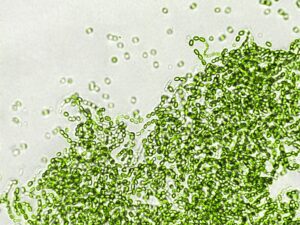Bacterial Meningococcal Disease
What is bacterial meningococcal disease?
Bacterial meningococcal disease is an illness caused by the bacteria Neisseria meningitidis. They can infect the bloodstream, spinal cord, and the lining of the brain. It is essential to seek treatment, as this infection can be fatal.
What are the symptoms of bacterial meningococcal disease?
Symptoms of this illness that affect the brain and spinal cord include:
- Fever
- Stiff neck
- Headache
- Confusion
- Nausea
- Light sensitivity
- Vomiting
Symptoms that affect the bloodstream are:
- Chills
- Fever
- Vomiting
- Cold hands and feet
- Rapid breathing
- Diarrhea
- Severe pains and aches
- A dark purple rash
What causes bacterial meningococcal disease?
The bacteria Neisseria meningitidis causes this illness, and it is spread through close and/or lengthy contact with an infected individual. About one in ten people have this bacteria living within them, but they do not show symptoms.
How is bacterial meningococcal disease diagnosed?
It can be difficult to obtain a diagnosis for bacterial meningococcal disease as it shares its symptoms with many other conditions. This is unfortunate, as early treatment is best. After noticing the characteristic symptoms, doctors will perform a test on a sample of blood or cerebrospinal fluid to see if there is any bacteria.
What are the treatments for bacterial meningococcal disease?
Early treatment is best for this illness. Antibiotics should be prescribed immediately. If the infection is severe, one may require assistance breathing, surgery to remove dead tissue, wound care, and medications for low blood pressure.
Where can I find out more about bacterial meningococcal disease?
Bacterial Meningococcal Disease Articles

GSK’s combination meningococcal vaccine receives FDA approval
The U.S. Food and Drug Administration (FDA) has approved GSK’s combination meningococcal vaccine, Penmenvy, for individuals aged 10 to 25 as reported by Biopharma Dive.

Rare Meningococcal Disease May Present with Unique Symptoms
In September 2023, the Virginia Department of Health announced that five people across the state died from a rare, serious, and somewhat unusual strain of

Recovering from Meningococcal Meningitis: A Rare Patient Story, Part Two
Continued from Part One With time my speech improved and eventually I could speak fluently again. I also worked with an occupational therapist who

Recovering from Meningococcal Meningitis: A Rare Patient Story, Part One
Written by Lucy Scott The 9th of October 2014 would be a day I would never forget… but in actuality, I don’t remember that day

Her Parents Thought It Was Food Poisoning, But She Died of Meningococcal Disease
According to the Centers for Disease Control, one in ten people are carriers of a disease-causing bacteria called Neisseria meningitidis. In most cases, they will



